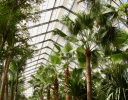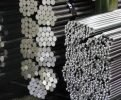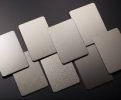The Evolution of LED Display Screens and Panels: A New Era in Visual Technology

In the digital age, visual communication has become more critical than ever. Whether for advertising, entertainment, or information dissemination, the quality of visual displays can significantly impact audience engagement. Among the various technologies available, LED display screens and LED display panels have emerged as frontrunners, revolutionizing how we present and consume visual content. This blog explores the evolution, advantages, applications, and future of LED display technology.
Understanding LED Display Screens and Panels
LED display screens are large visual displays that utilize Light Emitting Diodes (LEDs) to produce images and videos. These screens can be composed of multiple LED display panels, which are smaller units that come together to form a larger display. The technology behind LED displays allows for vibrant colors, high brightness, and excellent contrast ratios, making them suitable for various applications.
The Components of LED Display Panels
LED display panels consist of several key components:
- LEDs: The core of the display, LEDs emit light when an electric current passes through them. They can be arranged in various configurations to create different pixel densities.
- Control System: This system manages the content displayed on the screen. It processes input signals and ensures that the correct images and videos are shown.
- Power Supply: LED panels require a stable power supply to function effectively. The power supply ensures that the LEDs receive the necessary voltage and current.
- Cooling System: To maintain optimal performance, LED panels often include cooling systems to dissipate heat generated during operation.
Advantages of LED Display Screens and Panels
The rise of LED display technology can be attributed to several advantages over traditional display methods:
- High Brightness and Clarity: LED display screen are known for their exceptional brightness, making them visible even in direct sunlight. This feature is particularly beneficial for outdoor applications, such as billboards and signage.
- Energy Efficiency: LED technology is highly energy-efficient compared to older display technologies like LCD and plasma. This efficiency not only reduces operational costs but also contributes to environmental sustainability.
- Durability: LED display panel are built to withstand various environmental conditions. They are resistant to shocks, vibrations, and temperature fluctuations, making them suitable for both indoor and outdoor use.
- Versatility: LED display screens can be customized in size, shape, and configuration, allowing for a wide range of applications. From large stadium screens to small digital signage, the versatility of LED technology makes it a preferred choice for many industries.
- Low Maintenance: LED panels have a long lifespan and require minimal maintenance. This longevity reduces the need for frequent replacements, making them a cost-effective solution in the long run.
Applications of LED Display Screens and Panels
The versatility of LED display technology has led to its adoption across various sectors. Here are some notable applications:
1. Advertising and Marketing
One of the most prominent uses of LED display screens is in advertising. Businesses utilize these displays to showcase their products and services in a dynamic and eye-catching manner. Digital billboards, for instance, can display multiple advertisements in a rotating format, maximizing exposure and engagement. The ability to change content quickly allows advertisers to respond to market trends and consumer preferences in real-time.
2. Entertainment
In the entertainment industry, LED display screens have become a staple. Concerts, festivals, and sporting events often feature large LED displays that enhance the audience’s experience. These screens can display live feeds, graphics, and animations, creating an immersive environment that captivates viewers. Additionally, movie theaters are increasingly adopting LED technology for their screens, providing audiences with stunning visuals and vibrant colors.
3. Information Dissemination
LED display panels are widely used for information dissemination in public spaces. Airports, train stations, and bus terminals utilize LED screens to provide real-time updates on schedules, arrivals, and departures. This instant access to information enhances the overall travel experience and helps keep passengers informed.
4. Corporate and Educational Settings
In corporate environments, LED display screens are used for presentations, meetings, and training sessions. Their clarity and brightness ensure that information is easily visible to all participants, regardless of the room’s lighting conditions. Similarly, educational institutions are incorporating LED panels into classrooms to facilitate interactive learning experiences.
5. Retail Environments
Retailers are increasingly using LED display screens to enhance the shopping experience. These displays can showcase product promotions, brand stories, and interactive content, creating an engaging environment that encourages customer interaction and drives sales.
The Future of LED Display Technology
As technology continues to evolve, the future of LED display screens and panels looks promising. Innovations such as flexible LED displays, transparent screens, and microLED technology are on the horizon. These advancements will further enhance the capabilities of LED displays, allowing for even more creative applications.
Moreover, the integration of smart technology with LED displays is set to revolutionize how we interact with visual content. Features such as touch interactivity, augmented reality, and connectivity with mobile devices will create new opportunities for engagement and personalization.
Conclusion
The evolution of LED display screens and panels has transformed the way we experience visual content. With their energy efficiency, durability, and versatility, LED technology has become an integral part of our daily lives. From advertising to entertainment and information dissemination, LED displays are enhancing our interactions with the world around us. As we look to the future, the continued evolution of LED technology promises to bring even more exciting developments, further enriching our visual experiences. Whether you’re a business owner, a tech enthusiast, or simply someone who enjoys the latest in visual technology, the impact of LED display screens and panels is undeniable and will continue to shape our visual landscape for years to come.
ABOUT ME

Welcome to my blog Artcle slurp. We share latest article for all niche. If you want to publish your article then mail me on articleslurpblog@gmail.com
































